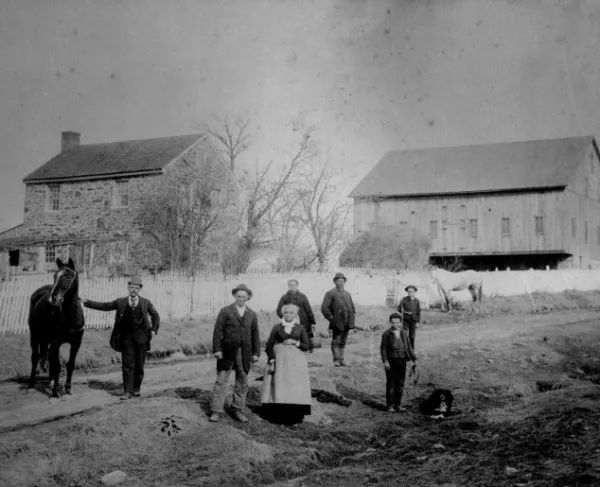Hamilton’s Own
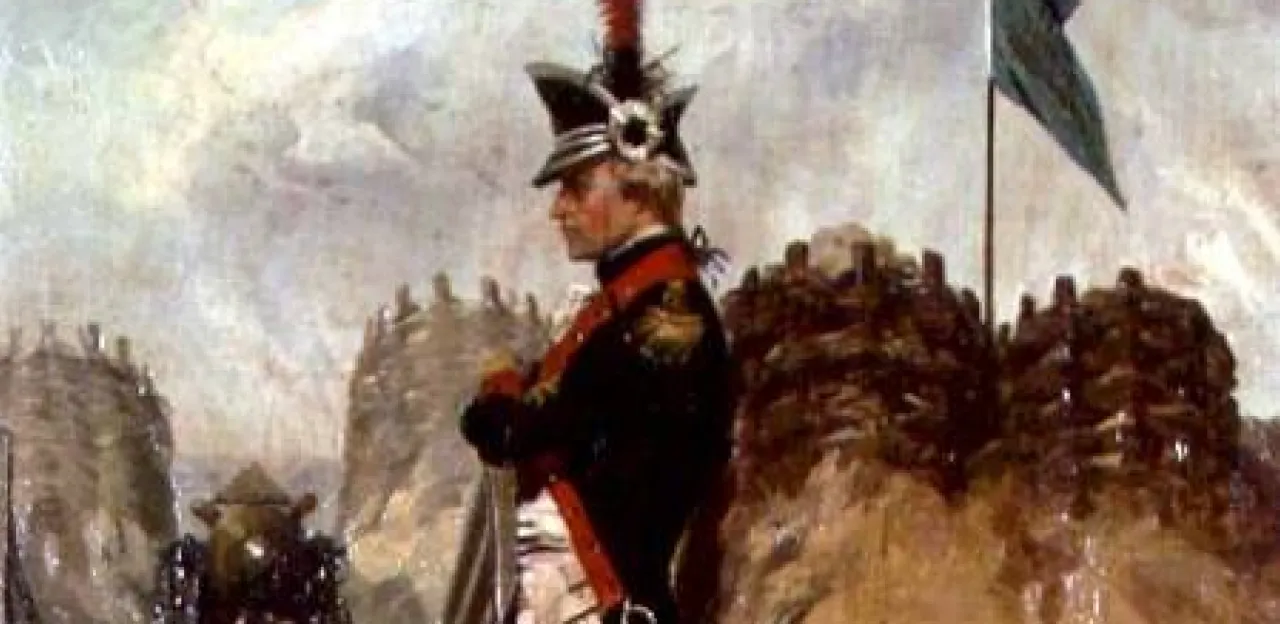
In early 1776, with the tide of revolt sweeping the 13 colonies, a 20-year-old West Indies immigrant organized a modest artillery militia unit that became the New York Provincial Company of Artillery. Its founder and captain was none other than Alexander Hamilton.
With two six-pound guns, 25 men and a wealth of revolutionary fervor, Hamilton joined Gen. George Washington’s Continental Army. Hamilton and his company crossed the Delaware River on that freezing Christmas night in 1776, commandeering an iron-ore barge, better known as a Durham Boat, which was nine feet wide and 60 feet—long to accomplish the task and confront the Hessians at Trenton.

General Henry Knox and his Continental artillery formed the backbone of Washington's small force. The artillery served the Patriots well as they were much more reliable in wet and cold weather, than the flintlock muskets. Hamilton’s two guns played a vital, firing in tandem at close range, helping to fuel what became a rout as the Americans attacked the next morning.
Hamilton and his men recrossed the Delaware with Washington's army, but soon enough the Continentals were once again back in New Jersey. Following the Second Battle of Trenton (Assunpink Creek), the young artillery commander and his men joined Washington and the army on its brutal overnight march to confront British forces at Princeton. Wrapping the wheels of their guns in rags to muffle the sound of the movement, Hamilton's men arrived in time to participate in the battle.
There, for the first time, the Americans saw the backs of British regular soldiers fleeing the battlefield in the battle of Jan. 3, 1777. When some holed up in Princeton College’s Nassau Hall, which was the largest private building in the colonies, Hamilton’s guns blasted them into submission. Hamilton must have relished the fact he was allowed to bombard Nassau Hall, since, he had applied for admission to the university, but was denied admission. Legend has it that one of Hamilton’s six-pound balls crashed through a window and beheaded a painting of King George II.
Hamilton’s exploits brought him a promotion to Washington’s staff, and in March 1777, he relinquished his command to another officer. Hamilton went on to become one of Founding Fathers of the United States before being killed by Aaron Burr in an 1804 duel. But his small artillery company would live on. And on.
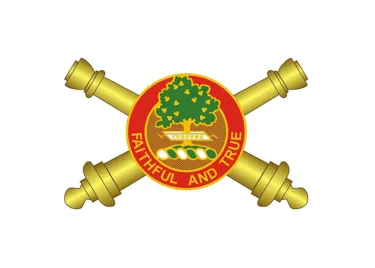
It would be reorganized, redesignated or consolidated more than 25 times in almost two and a half centuries, but would survive, calling itself “Hamilton’s Own.” Today, the 1st Battalion, 5th Field Artillery of the “Big Red One,” the army’s First Division, proudly claims the distinguished military history of “Hamilton’s Own” – the oldest regular army unit on active duty and one that can trace its roots all the way back to the Revolution.
Even during that first war, the unit was reorganized several times, eventually becoming the 2nd Company, 2nd Continental Artillery Regiment. It remained active after the Revolution, unlike other army units, and served in the War of 1812 as Captain Charles Wollstonecraft's Company, 1st Regiment of Artillery, enduring nine days of British bombardment in 1815 at Fort St. Philip on the Mississippi River below New Orleans.
In 1821, it was redesignated as Company F (or Battery F), 4th Regiment of Artillery, which it would remain for the rest of the 19th century. The company was ravaged by cholera while en route to the Black Hawk War in 1832 in the Illinois and Michigan territories. It slogged through the swamps of Georgia and Alabama in 1836 in conflicts with Seminole and Creek Indians. It was dispatched to Detroit in the summer of 1840 to help guard emigrants passing through Indian country.
The regiment served with distinction in the Mexican War, where Company F was engaged at Cerro Gordo and Contreras and joined in the storming of Chapultepec Castle. The unit served in “Bleeding Kansas” in 1857 and was one of the first Union to come to the aid of Washington, D.C. at the beginning of the Civil War. The company’s soldiers arrived in the capital bloodied and nursing wounds after being pelted with the stones and debris hurled at them by pro-Secessionists in Baltimore on April 18, 1861, the day before the infamous Pratt Street Riot.
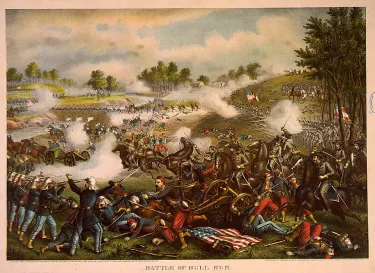
The unit fought at Falling Waters and Bull Run in 1861; Winchester and Cedar Mountain in 1862. It was engaged all three days of the battle of Chancellorsville, suffering fearsome losses. At Gettysburg, it anchored the middle of the 12th Corps line on Culp’s Hill.
In 1907, the company was reorganized to become Battery D, 5th Field Artillery, and was assigned to the 1st Division. While serving in the Philippines in 1908, First Lieutenant (later Brigadier General) Edmund L. Gruber gained fame not for battlefield heroics, but for composing a regimental march that would later become the song of the U.S. Army, “The Army Goes Marching Along.” Gruber wrote it as “The Caisson Song,” and in the original lyrics, it was the caissons of the 5th Artillery that went rolling along.
The unit earned new campaign streamers fighting in Europe in World War I and was with the Big Red One in every campaign in Europe during World War II. In 1964, it became the 1st Battalion, 5th Artillery, or “1-5 FA,” which it remains today. (In 2005, it was redesignated as 1st Battalion, 5th Field Artillery Regiment).
The long history of “Hamilton’s Own” is filled with countless displays of uncommon courage by generations of American artillerists. Perhaps no story exemplifies the fighting spirit better than that of Lt. Col. Charles C. Rogers, commander of Fire Base Rita deep in the jungle of Vietnam on Halloween night 1968.
Just after midnight, North Vietnamese Army mortar shells rained down on Rogers’s command, followed by a massive, terrifying human wave attack. Rogers ignored the storm of fire to direct his vastly outnumbered force, leveling his guns to blast the jungle and the oncoming hordes with point-blank precision. Hot pieces of mortar shell shrapnel tore into him, but the bloodied commander kept fighting, leading a counterattack to prevent a gun position from being overrun.
From midnight until well past dawn, 1-5 FA held its ground. Rogers was wounded three times and finally, unable to stand, continued to give orders as medics worked on his bloodied body. For his extraordinary courage and leadership, Rogers was awarded the Congressional Medal of Honor.
Rogers, who had served in a segregated, all-black unit upon joining the Army in 1952, went on to become a Major General, serving in Germany before retiring in 1984.
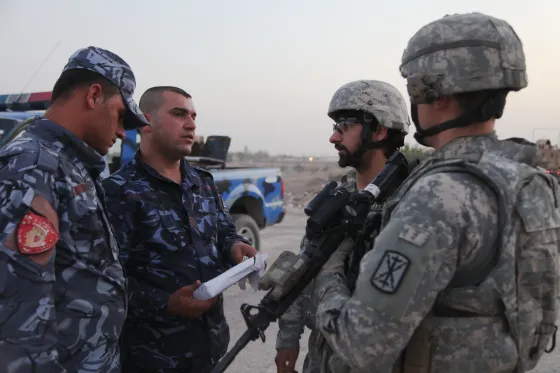
The 1st Battalion, 5th Field Artillery deployed in January 1991 for Operation Desert Shield and Desert Storm, joining in the largest artillery raid ever conducted. It served in Iraq in 2003-2004 and in 2011, numbering among the last American troops in Iraq at that time.
Headquartered with the 1st division at Fort Riley, Kan., the 1-5 FA, “Hamilton’s Own,” can point with pride to a flag that includes some 60 campaign streamers and a record of service that includes nearly every conflict in American history.
Related Battles
5
905
2,896
1,982
2,353
1,338
17,304
13,460
23,049
28,063
75
270

